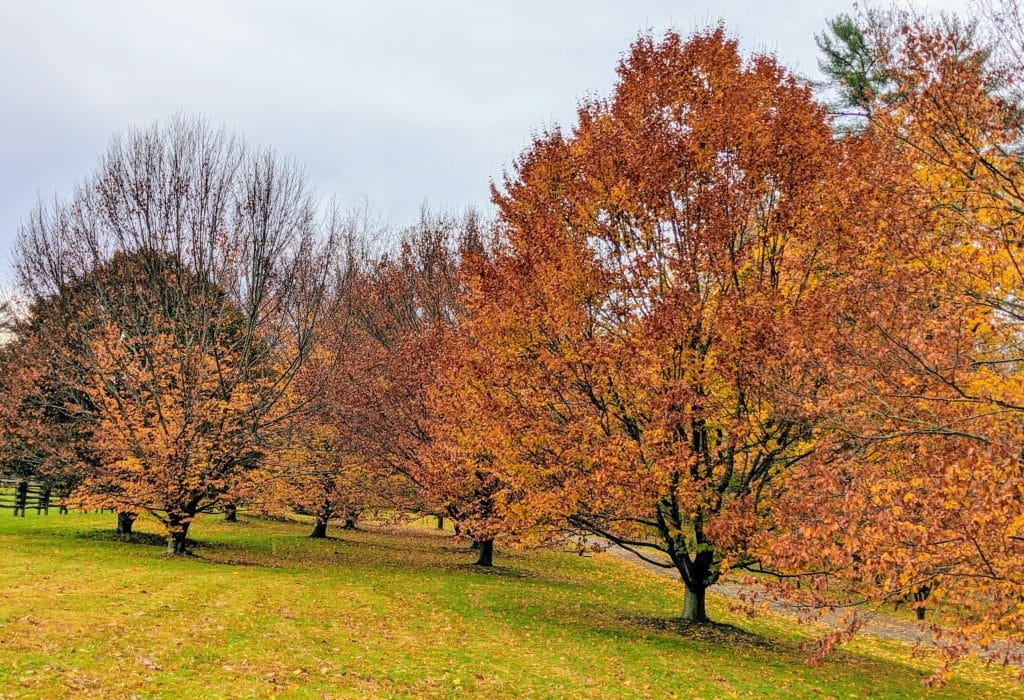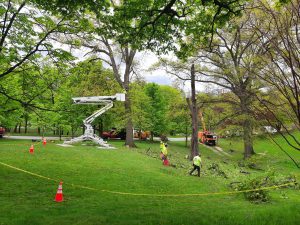When it comes to landscaping, timing is crucial. Many people question whether they can plant trees in the fall. Fall in Houston Heights provides an excellent chance for tree-planting enthusiasts. Let’s look at the specifics of fall tree planting and why it’s a good alternative for improving your landscape.
Can you plant trees in the fall?
In the fall, you can plant trees. Fall is an excellent time for tree planting in many areas. As temperatures begin to fall, trees are less stressed by heat, allowing them to grow their root systems more effectively. Furthermore, fall usually brings more rain, which provides newly planted trees with enough moisture to support their growth. Planting in the fall allows trees to acclimate to their new surroundings before the harsh winter conditions set in, enhancing their prospects of long-term survival.
Benefits of Planting Trees in the Fall

Planting trees in the fall offers a plethora of benefits that contribute to the health and vitality of both the trees and the surrounding ecosystem. As temperatures begin to cool, trees face less stress from heat, allowing them to grow their root systems more effectively. The cooler weather also minimizes the risk of heat stress and water loss, promoting healthy growth. Additionally, fall often brings more rainfall, providing trees with adequate moisture to maintain their growth and development. By planting in the fall, trees have the opportunity to acclimate to their new environment before the severe conditions of winter set in. This early establishment strengthens their resilience and increases their chances of long-term success. Furthermore, fall planting helps restore urban green spaces, increasing air quality, reducing erosion, and providing habitat for wildlife. Overall, the benefits of planting trees in the fall extend far beyond aesthetics, contributing to the sustainability and well-being of ecosystems.
Best Trees to Plant in the Fall
Selecting the ideal trees to plant in the fall depends on numerous criteria, including your region’s climate, soil type, and available space. However, some tree species are particularly well-suited for fall planting in various locations. Native trees, such as red maple, white oak, and eastern redbud, are ideal choices as they are adapted to local environmental conditions and often require less upkeep. Evergreen trees like pine, spruce, and cedar give year-round interest with their rich foliage and can enhance the landscape’s aesthetic appeal, especially during the winter months. Additionally, fruit-bearing trees such as apples, pears, and cherries are popular choices for fall planting, bringing both beauty and utility. When selecting trees for fall planting, consider aspects such as the tree’s mature size, growth rate, and any unique site requirements to guarantee good establishment and long-term growth in your landscape.
Preparing Your Site for Fall Tree Planting
Preparing your site for fall tree planting is essential to ensuring the success of your new trees. Start by assessing the soil conditions and conducting a soil test to determine its pH levels and nutrient content. To create a healthy growing environment for your trees, amend the soil as needed. Clear away any debris, rocks, or competing vegetation from the planting area to give your trees ample space to establish their roots. Ensure that the planting site receives adequate sunlight and has proper drainage to prevent waterlogging. Consider any potential obstacles, such as overhead power lines or underground utilities, and plan accordingly to avoid interference. Finally, gather the necessary tools and equipment, including shovels, mulch, and watering supplies, to facilitate the planting process. By properly preparing your site beforehand, you can set the stage for successful fall tree planting and ensure the long-term health and vitality of your new trees.
Steps to Planting Trees in the Fall
Planting trees in the fall requires careful attention to detail to ensure their successful establishment and long-term health. Follow these steps to plant trees effectively:
Choose the right tree: Choose a healthy tree that fits your climate, soil type, and site conditions. Factors such as mature size, growth rate, and desired aesthetic qualities should be considered.
Select the planting location: Choose a suitable location with adequate sunlight, proper drainage, and enough space for the tree to grow to its full size without interference fro. buildings or other obstacles.
Prepare the planting hole: Dig a hole that is two to three times wider than the tree’s root ball and just as deep. Loosen the soil in the hole and remove any rocks or debris.
Plant the tree: Carefully remove the tree from its container or burlap wrapping, taking care not to damage the roots. Place the tree in the center of the planting hole, ensuring that the top of the root ball is level with the surrounding soil.
Backfill the hole: Fill the hole with soil, gently tamping it down to remove air pockets. To settle the soil and moisten the roots, thoroughly water the tree.
Mulch and water: To retain moisture and suppress weeds, apply a layer of mulch around the tree’s base. Water the tree regularly, especially during dry spells, to ensure adequate hydration for healthy growth.
By following these steps, you can plant trees in the fall with confidence, knowing that you’ve given them the best possible start for thriving in your landscape.
Related posts:
Common Mistakes to Avoid
Avoiding common mistakes when planting trees in the fall can help ensure the success of your landscaping efforts. Here are some pitfalls to watch out for:
Planting Too Late: Delaying tree planting until late fall can hinder root establishment before winter dormancy, leading to reduced survival rates.
Improper Tree Selection: Choosing tree species that are unsuited to your climate, soil type, or site conditions can lead to poor growth, increased maintenance, and even tree failure.
Planting Too Deep: Planting trees too deep can suffocate roots and inhibit proper growth. To avoid this issue, make sure that the root flare is slightly above ground level.
Neglecting Watering Needs: Failing to water newly planted trees adequately, especially during dry spells, can lead to stress, wilting, and even death.
Skipping Mulching: Mulch helps retain moisture, suppress weeds, and regulate soil temperature. Skipping mulching can result in increased water loss and weed competition, hindering tree growth.
Avoiding these common mistakes will set the stage for successful fall tree planting and ensure the long-term health and vitality of your landscape.
FAQS
When is the best time to plant trees in the fall?
The best time to plant trees in the fall is typically early to mid-fall, ideally before the first frost. This allows the trees to establish their root systems before winter dormancy sets in.
Can we plant all trees in the fall?
Although you can plant many tree species in the fall, it’s crucial to select species that are appropriate for fall planting in your particular climate and region. Some trees may prefer spring planting to ensure proper establishment.
How do I safeguard fall-planted trees from frost damage?
To protect fall-planted trees from frost damage, consider applying a layer of mulch around the tree’s base to insulate the soil and retain moisture. Additionally, you can cover young trees with burlap or frost cloth during cold snaps to shield them from freezing temperatures.
Is fall planting suitable for fruit trees?
Yes, fall planting can be suitable for fruit trees, especially in regions with mild winters. Planting fruit trees in the fall allows them to establish their root systems before the growing season, leading to healthier growth and better fruit production in the following years.
Should I fertilize newly planted trees in the fall?
It’s generally not recommended to fertilize newly planted trees in the fall. Fertilizing can stimulate new growth, which may be susceptible to frost damage. Instead, focus on providing adequate water and mulch to support root establishment.
Conclusion
To summarize, planting trees in the fall is a rewarding endeavor that provides numerous benefits to both the trees and the environment. Fall planting prepares the ground for successful tree establishment and long-term growth by utilizing cooler temperatures, adequate soil moisture, and reduced heat stress. Fall-planted trees improve the beauty and sustainability of your landscape by providing shade, enhancing aesthetics, and improving air quality. You can make your fall tree planting efforts a success by using proper planting techniques, avoiding common mistakes, and selecting appropriate tree species. So, roll up your sleeves, grab your shovel, and embark on a journey to enrich your surroundings with the natural beauty and benefits of trees this autumn. Your efforts will not only improve your landscape but will also help to create a greener, healthier future for generations to come.




